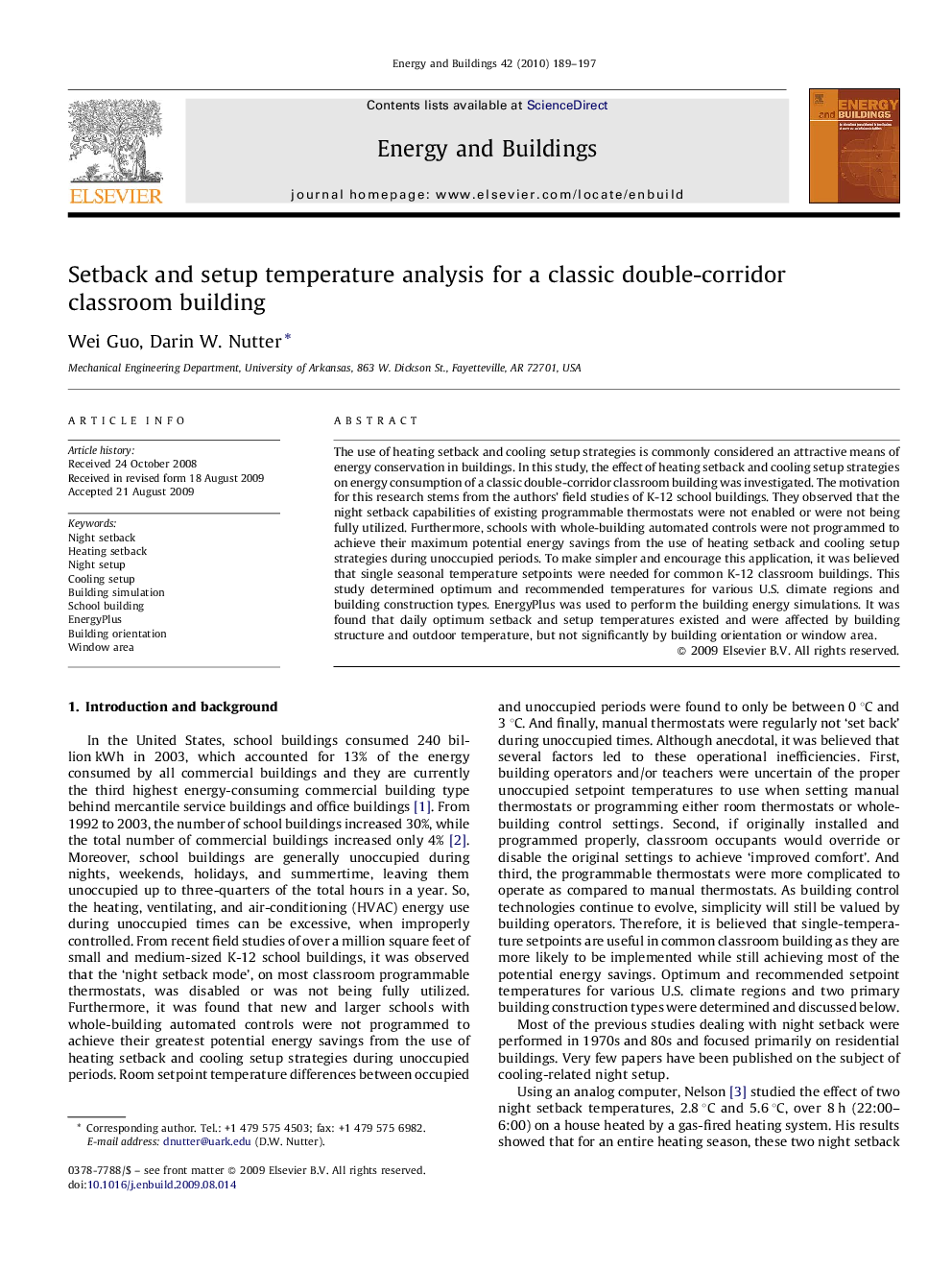| Article ID | Journal | Published Year | Pages | File Type |
|---|---|---|---|---|
| 265168 | Energy and Buildings | 2010 | 9 Pages |
The use of heating setback and cooling setup strategies is commonly considered an attractive means of energy conservation in buildings. In this study, the effect of heating setback and cooling setup strategies on energy consumption of a classic double-corridor classroom building was investigated. The motivation for this research stems from the authors’ field studies of K-12 school buildings. They observed that the night setback capabilities of existing programmable thermostats were not enabled or were not being fully utilized. Furthermore, schools with whole-building automated controls were not programmed to achieve their maximum potential energy savings from the use of heating setback and cooling setup strategies during unoccupied periods. To make simpler and encourage this application, it was believed that single seasonal temperature setpoints were needed for common K-12 classroom buildings. This study determined optimum and recommended temperatures for various U.S. climate regions and building construction types. EnergyPlus was used to perform the building energy simulations. It was found that daily optimum setback and setup temperatures existed and were affected by building structure and outdoor temperature, but not significantly by building orientation or window area.
